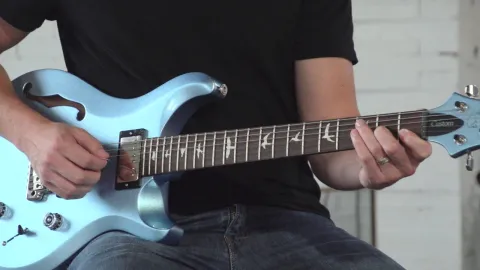Music Theory 401 - 7th Chords

Up until now we have been making triads, or three note chords. But of course, we can play more than three notes at a time. As we add additional notes to chords, we name the additional notes in the chords by their scale degree. Therefore, 7th chords mean that we are adding the seventh scale degree to the triad.
For example: the C major triad is comprised of the notes: C (tonic), E (major third), and G (perfect fifth). When we add a B (major seventh) onto our triad we get what is called a major seventh chord.
There are four kind of diatonic 7th chords. They are as follows:
- Major 7 - 1 3 5 7
- Minor 7 - 1 b3 5 b7
- Dominant 7 - 1 3 5 b7
- Minor 7 b5 - 1 b3 b5 b7
Just like we learned in the beginner level, chord qualities exist at certain degrees in a scale. As you remember, all of our I IV and V chords are major, our II III and VI chords are minor, and our VII is diminished. When we add the corresponding 7th degree to each of these chords we end up with these qualities:
- I major 7
- II minor 7
- III minor 7
- IV major 7
- V Dom 7
- VI minor 7
- VII Mi7(b5)
I want to point out that since 7th chords are made up of four notes (roots, thirds, fifths, sevenths), these are actually two triads combined and played as one. For example: the C major 7 chord (C, E, G, and B) is comprised of both a C major chord (C, E, and G) and an E minor chord (E, G, and B). Therefore, there are two ways to look at this chord: A C major chord with a B on top, or an E minor chord with a C in the bass. While this may seem confusing, I assure you that as we progress this will prove to be a huge key in unlocking your understanding of theory.